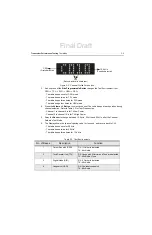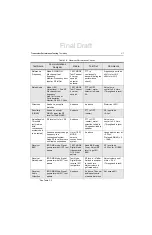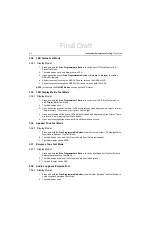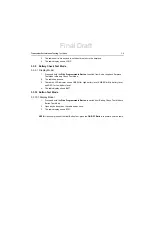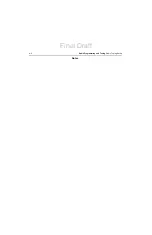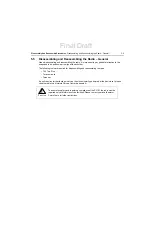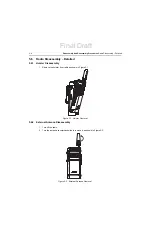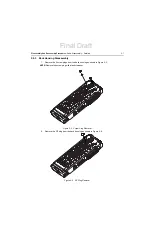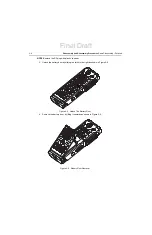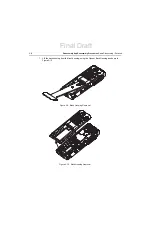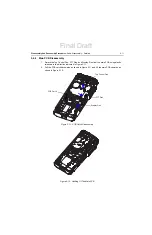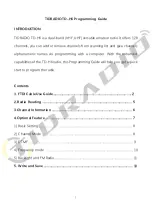
5-2
Disassembly And Reassembly Procedures
: Preventive Maintenance
5.2.1
Inspection
Check that the external surfaces of the radio are clean, and that all external controls and switches
are functional. It is not recommended to inspect the interior electronic circuitry.
5.2.2
Cleaning Procedures
The following procedures describe the recommended cleaning agents and the methods to be used
when cleaning the external and internal surfaces of the radio. External surfaces include the front
housing, housing assembly and battery case. These surfaces should be cleaned whenever a
periodic visual inspection reveals the presence of smudges, grease, and/or grime.
The only recommended agent for cleaning the external radio surfaces is a 0.5% solution of a mild
dishwashing detergent in water. The only factory recommended liquid for cleaning the printed circuit
boards and their components is isopropyl alcohol (100% by volume).
Cleaning External Plastic Surfaces
Apply the 0.5% detergent-water solution sparingly with a stiff, non-metallic, short-bristled brush to
work all loose dirt away from the radio. Use a soft, absorbent, lintless cloth or tissue to remove the
solution and dry the radio. Make sure that no water remains entrapped near the connectors, cracks,
or crevices.
Cleaning Internal Circuit Boards and Components
Isopropyl alcohol (100%) may be applied with a stiff, non-metallic, short-bristled brush to dislodge
embedded or caked materials located in hard-to-reach areas. The brush stroke should direct the
dislodged material out and away from the inside of the radio. Make sure that controls or tunable
components are not soaked with alcohol. Do not use high-pressure air to hasten the drying process
since this could cause the liquid to collect in unwanted places. After completing of the cleaning
process, use a soft, absorbent, lintless cloth to dry the area. Do not brush or apply any isopropyl
alcohol to the frame, front housing or back housing.
NOTE
Internal surfaces should be cleaned only when the radio is disassembled for service or
repair.
Use all chemicals as prescribed by the manufacturer. Be sure to follow all
safety precautions as defined on the label or material safety data sheet.
The effects of certain chemicals and their vapors can have harmful results on
certain plastics. Avoid using aerosol sprays, tuner cleaners and other
chemicals.
NOTE
Always use a fresh supply of alcohol and a clean container to prevent contamination by
dissolved material (from previous usage).
!
C a u t i o n
Final Draft
Содержание SL1M
Страница 1: ...tTitle Page SL1M Portable Radio Basic Service Manual MN000916A01 AA tttt Final Draft ...
Страница 2: ...Final Draft ...
Страница 4: ...Notes Final Draft ...
Страница 6: ...vi Notes Final Draft ...
Страница 10: ...x Table of Contents Notes Final Draft ...
Страница 12: ...xii List of Figures Notes Final Draft ...
Страница 14: ...xiv List of Tables Notes Final Draft ...
Страница 16: ...xvi List of Tables Notes Final Draft ...
Страница 36: ...Notes 2 6 Test Equipment and Service Aids Audio Test Cable Final Draft ...
Страница 46: ...Notes 3 10 Transceiver Performance Testing Test Mode Final Draft ...
Страница 50: ...Notes 4 4 Radio Programming and Tuning Radio Tuning Setup Final Draft ...
Страница 78: ...Notes 5 28 Disassembly And Reassembly Procedures Torque Chart Final Draft ...
Страница 82: ...Notes 6 4 Basic Troubleshooting Operational Error Codes Final Draft ...
Страница 89: ...Final Draft ...


